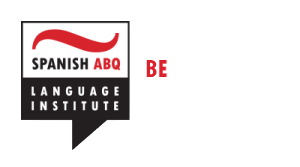ONLINE TOOLS
Accents
How to type accents: Typing Foreign Language Characters on Your Mac or PC
Alphabet
The Spanish alphabet and its letters
Countries/Cultures
Everything about Latin America: Latin America Network Information Center – LANIC
Dictionaries
Spanish-English, English-Spanish, and Spanish-Spanish: Diccionarios.com
Spanish-Spanish: Diccionario de la Lengua Española (The dictionary from the Real Academia Española.)
Grammar
Basic Spanish grammar lessons, explained well: Learn Spanish: A Free Online Grammar Tutorial
Exercises covering tricky points of grammar: Grammar Exercises Index
Media
Spanish news media outlets worldwide: Recursos Noticieros en Español, Kidon Media-Link
News [^]
Spanish news media outlets worldwide: Recursos Noticieros en Español, Kidon Media-Link
The latest news, in Spanish:
Google News Argentina
Google News Chile
Google News España
Google News México
Pen Pals
Person-to-person international correspondence: International Pen Friends/ Pen Pals Exchange
Classroom-to-classroom international correspondence: Schools Pen Friends/ Pen Pals Exchange
Pronunciation
Computer pronunciation of Spanish you enter: Bell Labs Spanish Text-to-Speech Synthesis
Reading
Spanish-language short stories: Proyecto Sherezade
Great books in Spanish for children: Spanish children’s book review
Search Engines
Internet search in Spanish: AltaVista
Technical Spanish
English-Spanish Internet/computer terms: Ciber-Lexico Comparativo (Comparative CyberLexicon)
1200 social-security terms translated: Social Security Online
350+ mathematical terms translated: Spanish-English Math Dictionary
350+ fruits, herbs, and vegetables in English, Spanish, and Latin: NAPPO Commodity Reference
Tests
Check your Spanish level: Webspañol’s Spanish Level Test
Translations
Fast, free, NOT PERFECT (sometimes terrible, but sometimes OK) AltaVista – World/Translate
Verbs
Complete conjugation of any infinitive (-ar, -er, -ir) verb: Comp-jugador
Basic irregular-verb conjugations (present tense of estar, ser, haber, tener, poder, ir)
Vocabulary
100+: Basic Spanish Words with Pronunciation (numbers, days, months, eating, colors, family, directions, etc.)
PRACTICING/LEARNING MORE
A few ideas that may have already occurred to you, and maybe a few that haven’t. (Which one will you try next?)Take a trip to someplace Spanish is spoken. (Spain, Mexico, Costa Rica, …)
Do a language exchange: Someone helps you with your Spanish; you help them with their English. This can be face-to-face, in your community, or atMyLanguageExchange.com via voice chat, text chat, or e-mail.
Find Spanish-language magazines, newspapers, or children’s books at the library, newsstand, bookstore, or online. For Spanish-language news from any part of the Spanish-speaking (and non-Spanish-speaking) world, try: Recursos Noticieros en Español, Kidon Media-Link.
Learn real vocabulary reading real Spanish. You can read a short story at Proyecto Sherezade (no glossary, but interesting reading).
Buy or borrow Spanish-language CDs or tapes that come with lyric sheets. (The music will help you remember the Spanish you learn.)
Get hooked on a telenovela (soap opera). If you have access to a TV channel that broadcasts Spanish-language soap operas, you can read the daily summary of your favorite one at Telenovela World either after viewing the broadcast (to clear up whatever you did not understand) or before viewing it on videotape (so you will know what is happening). A great way to get hooked on daily Spanish practice! (And, unlike U.S. soap operas, they don’t last forever, just a few months.)
Rent or check out Spanish-language films which are subtitled in English, Suggestions: Pedro Almodóvar’s “Women on the Verge of a Nervous Breakdown” (R, but a comedy) or his “All About My Mother” (R). Two of my favorites movies are: Volver (may be a bit fast) and Nine Queens (Get the Spanish/Argentinian version, they also have it in English but I think it is much better in Spanish! It has a great plot! The video store, library, or Netflix may have other Spanish-language offerings, too, including films more suitable for children.
Find a book you enjoy in English and in Spanish. Read a paragraph in one language, then again in the other. (A fast way to pick up a lot!) I would recommed: The Little Prince.
Search the web for pages in Spanish about things you have already heard in English (the news) or about things you know quite a bit about already (e.g., your hobbies, profession, or interests).
Find a pen pal at Europa Pages’ International Pen Friends/ Pen Pals Exchange site.
Whatever you do, take advantage of what you already know to help you acquire more Spanish skills, and take advantage of your personal interests and enthusiasms to stay interested and enthusiastic about learning more Spanish!
